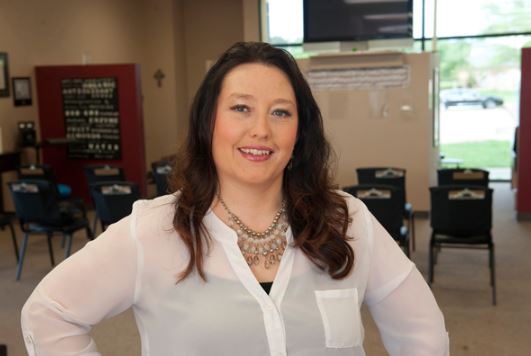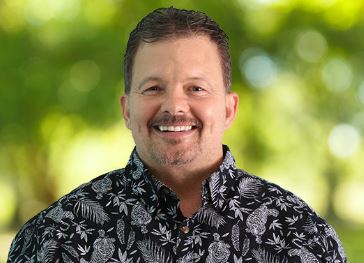“Why does my back crack so much during an adjustment?”
Sometimes it feels good, and sometimes it feels like nothing, but my back makes a lot of noise during an adjustment. Why is this and what is actually happening when I hear these noises?
36 Answers
ChiropractorChiropracticAdjustment
This noise is referred to as 'cavitation', as it's due to the normalizing of discal pressure inside and outside of the disc and/or joint capsules. This is a healthy sound, as the disc is receiving needed nutrients from outside. (note: the capillary bed inside the vertebral disc disappears naturally, at the approximate age of 22. So the disc tissues get their nutrients by this cavitation process.
That is a question that has been around for many years with a lot of speculation. A few years ago I read a study by two British researchers concerning this subject and their conclusions were the most logical I have seen.
They concluded that when a spinal vertebra misaligns it forces the synovial fluid to one side of the joint compartment. Synovial fluid is what allows joints to glide smoothly across each other. When the vertebra moves during the adjustment pressure is released and the fluid suddenly returns to its normal distribution inside the joint. The pop or crack is caused by cavitation resulting from the sudden movement of this fluid.
They concluded that when a spinal vertebra misaligns it forces the synovial fluid to one side of the joint compartment. Synovial fluid is what allows joints to glide smoothly across each other. When the vertebra moves during the adjustment pressure is released and the fluid suddenly returns to its normal distribution inside the joint. The pop or crack is caused by cavitation resulting from the sudden movement of this fluid.
When you are getting adjusted, you will hear a popping sound. That is simply the same noise you hear when you crack your knuckles. The sound itself DOES NOT signify that the adjustment was “good.” Proper chiropractic adjustments are a result of proper line of drive and direction of the fixated structures at issue. The sound is associated with it and most people think the adjustment wasn’t effective if they don’t hear that sound. This is false.
However, when you get adjusted, you may get a slight euphoric feeling at first, which is the release of endorphins and enkephalins into your bloodstream. You also can be followed by soreness later that day if it’s not a regular occurrence for you.
However, when you get adjusted, you may get a slight euphoric feeling at first, which is the release of endorphins and enkephalins into your bloodstream. You also can be followed by soreness later that day if it’s not a regular occurrence for you.
THE NOISE YOU HEAR DURING AN ADJUSTMENT IS GAS BEING RELEASED FROM THE JOINT CAPSULE. EACH INDIVIDUAL IS DIFFERENT IN THEIR BIOLOGICAL MAKE-UP. SOME PEOPLE GET MORE GAS BUILD-UP IN THEIR JOINTS THAN OTHERS. NOTHING TO WORRY ABOUT.
The noise you hear is gas leaving the joint itself and sometimes, when we adjust the spine, we are looking for the most restricted or causing issue. But each vertebrae have several joints, in between, above and below the next level in the spine. So it sounds like multiple levels or even multiple joints at same level.
If you are seeing a chiropractor than the noise you hear is nitrogen gases that get trapped in your joints. When the chiropractor moves the bones the gases are released. This sound is normal.
The cracking sound you hear is technically called a "cavitation" during a chiropractic adjustment. It comes down to physics. Boyal's Law. Dissolved gas in a joint solution (liquid) of synovial fluid (lubrication for the joint) when the joint is quickly expanded (ie from an adjustment), decreases pressure in the joint and the gas "pops" as it comes out of solution. Sort of like a soda "pop" can. Compressed gas in a can, "pops" as you open it.
Does an audible release improve the outcome of a chiropractic adjustment? Short answer is: no. See below research article.
https://www.activator.com/category/cavitation/
Just because the joint pops does not mean the bone moved into place. Nor does it mean it moved out of place. However, if you experience pain when you are twisting and moving on your own... it probably did move out of place. Call a licensed chiropractor to examine you.
Does an audible release improve the outcome of a chiropractic adjustment? Short answer is: no. See below research article.
https://www.activator.com/category/cavitation/
Just because the joint pops does not mean the bone moved into place. Nor does it mean it moved out of place. However, if you experience pain when you are twisting and moving on your own... it probably did move out of place. Call a licensed chiropractor to examine you.
The "popping" sound is actually nitrogen gas bubbles being released from the synovial fluid in the facet joints of the spine. The adjustment is freeing up the segments of the spine that are not moving correctly to restore proper motion and joint alignment, therefore taking pressure off the nervous system.
Cavitation is the physiological phenomenon when nitrogen and carbon dioxide
gases are released if 10% of the joint vacuum is disrupted (i.e. cracking
your nuckles) similar to the sound of cracking open a can of soda as the
vacuum is opened and the carbon dioxide is released.
gases are released if 10% of the joint vacuum is disrupted (i.e. cracking
your nuckles) similar to the sound of cracking open a can of soda as the
vacuum is opened and the carbon dioxide is released.
Your doctor should have explained this; you're simply hearing built up gas (most likely nitrogen) in the joints being released into the surrounding joint space.
The cracking sound that comes with the adjustment is a CO2 gas being released as the joint moves. It feels good because there are endorphants that are released as well as there is a decrease of pressure inside the joint. Result is less pain, greater range of motion and muscle relaxation. You can read more about cracking sounds here: http://www.chirohealthsf.com/wp-admin/post.php?post=432&action=edit
When you get adjusted the sound you hear is either gas being released from
the joint capsule or breaking of scar tissue adhesions or both. When you
get adjusted the goal is to provide more motion the the joints that are
moving less than normal. By breaking free these adhesions and creating
more mobility in the joints that are restricted it can help restore normal
function, decrease pain, and decrease stress on the nervous system.
the joint capsule or breaking of scar tissue adhesions or both. When you
get adjusted the goal is to provide more motion the the joints that are
moving less than normal. By breaking free these adhesions and creating
more mobility in the joints that are restricted it can help restore normal
function, decrease pain, and decrease stress on the nervous system.
The popping you here is actually called a cavitation and it is a release of gases oxygen nitrogen and CO2...thrse are byproducts of synovial fluid.
Gases are escaping from the joint spaces that are opened up during an adjustment. The release of the gas tends to sound like a “cracking” noise. It is not the actual adjustment, and will take 20 minutes for the joint to refill with the gases again before another sound can be made from the same joint. When the noise is heard, though, studies have found that people get an endorphin (pain reducing hormone) release that decreases pain for up to 5 minutes. It is the same noise associated when people “crack” their knuckles.
The noise you hear is gas being displaced from the joint space. It is not bone on bone and is nothing to worry about.
Hi,
I would love to help you with your question. I always explain it this way
to my patients because some people wonder if the noise that you hear is
actual bone cracking. Well good news, it's not.
Between each spine vertebrae there is a joint space in between with a disc
and nerves coming from each side's of the bones.
In this joint, there is air and more or less pressure for a dysfunction in
the joint.
As a chiropractor, we are able to find dysfunction and misalignment inside
of those joint and correct them.
So when we adjust we move the air inside the joint and it is like opening a
bottle of champagne. Because there is so much pressure inside, when you pop
the cap it makes a poping sound right?
Well, the same happens inside of the joint space during and adjustment. So
if there was lots of pressure in, you will hear louder or more sounds and
if there wasn't too much pressure, you won't. Sometimes you dont hear a
sound at all.
Remember that it doesn't matter if you hear a sound or not. The adjustment
is still effective and help your body to get back to its optimal state of
health to keep your body in total harmony with your mind and your
environment.
Hope this helps,
Enjoy your next adjustment.
Dr. Jessica Grichy, DC
www.drjessicagrichydc.com
P: (213)948-0705
e-mail: drgrichydc@gmail.com
"Because your Well-being Matters..."
I would love to help you with your question. I always explain it this way
to my patients because some people wonder if the noise that you hear is
actual bone cracking. Well good news, it's not.
Between each spine vertebrae there is a joint space in between with a disc
and nerves coming from each side's of the bones.
In this joint, there is air and more or less pressure for a dysfunction in
the joint.
As a chiropractor, we are able to find dysfunction and misalignment inside
of those joint and correct them.
So when we adjust we move the air inside the joint and it is like opening a
bottle of champagne. Because there is so much pressure inside, when you pop
the cap it makes a poping sound right?
Well, the same happens inside of the joint space during and adjustment. So
if there was lots of pressure in, you will hear louder or more sounds and
if there wasn't too much pressure, you won't. Sometimes you dont hear a
sound at all.
Remember that it doesn't matter if you hear a sound or not. The adjustment
is still effective and help your body to get back to its optimal state of
health to keep your body in total harmony with your mind and your
environment.
Hope this helps,
Enjoy your next adjustment.
Dr. Jessica Grichy, DC
www.drjessicagrichydc.com
P: (213)948-0705
e-mail: drgrichydc@gmail.com
"Because your Well-being Matters..."
The sound you are hearing during your chiropractic adjustment which you are calling a crack, is a release of gas inside the fluid filled joint space that happens when the joint is moved past its normal range of motion. It's like the cork coming up from the champagne bottle. Afterward, lubricating fluid refills into the joint space, lubricating the joint and providing some relief. There is also a 15 minute endorphin release which accompanies this popping sound, in chiropractic we call the sound a cavitation. Cavitation is not necessary to have corrected a subluxation or a mis-aligned bone causing a "stuck joint". The joint can be realigned with other techniques like the activator tool, or even a very light force touch when applied properly.
Thank you for your question. The sound you hear is a common question from chiropractic patients. The joints in our spine and in other areas of our body have a joint capsule that is filled with fluid to ensure that the joint can move properly. When you receive an adjustment, gas that is suspended in the fluid comes out of solution and makes that noise. This is not harmful and, as the body reabsorbs this gas, you can get adjusted within a few minutes and hear more popping, very similar to popping your knuckles.
It is the build up of gases in the joint because the noises with an adjustment. It is mostly made up of carbon dioxide
What you are hearing is called a joint "cavitation". With the correct combination of gases and fluids within the joint, and a properly delivered manipulation (high velocity, low amplitude thrust) you will hear the "cracking" sound. It is important to understand that a properly delivered manipulation can occur without the proper combination of gases and fluids existing within the joint and no sound will be heard (try cracking your knuckles then immediately try cracking it again no sound will be heard if you initially heard a sound until gases and fluids return to the required levels in the joint for a cavitation). Patients that tend to have more relaxed muscles and/or looser ligaments holding joints together tend to make it easier on the chiropractor to deliver high velocity low amplitude thrusts and thus tend to "crack" more than patients with tight muscles, ligaments, or degenerated joints surfaces which make it harder for the chiropractor to manipulate the joint.
Ryan P. Messina
Chiropractor
The "audible" sound you hear is gas and fluid that builds up due to stress.
When the joints are put back in place and given better motion/mobility
those gases and fluid get released decreasing any restriction caused by the
joint.
When the joints are put back in place and given better motion/mobility
those gases and fluid get released decreasing any restriction caused by the
joint.
The noise is called a "cavitation" and it's produced by gas that escapes the fluid from within the joint. Similar to when you open a can of pop and gas escapes making a popping noise. Most joints in the body have synovial fluid inside them and the joint is incapsulated. During the adjustment sometimes the gas in solution escapes and you hear a "pop".
The technical name for what causes the noise is tribonucleation. It is really just a side effect of the joint moving.
Here is a MRI video of it happening when a finger is pulled, noise and all. This comes from the University of Alberta, the lead author is a D.C., PhD:
https://www.youtube.com/watch?v=BHEcQluSzmM
Here is a MRI video of it happening when a finger is pulled, noise and all. This comes from the University of Alberta, the lead author is a D.C., PhD:
https://www.youtube.com/watch?v=BHEcQluSzmM
Your spinal joints contain "grease" known as synovial fluid. This grease contains dissolved gases. When your spine is adjusted, the spinal joints are gapped or opened, creating a vacuum within the joint. This vacuum pulls the gases out of the grease, turning the grease to foam. This release of gas is what creates the audible "pop". If there is no "popping" sound, it does not mean the adjustment was not successful, it simply means that there was no sound from the escaping gas.
That sound is not your spine "cracking" or "popping" like most people think. That sound is created by gas (in this case, nitrogen) rushing in to fill the partial vacuum created when the joints are slightly separated. Another example of this phenomenon would be the "pop" sound you hear when the cork is taken out of a champagne bottle. Not all chiropractic adjusting techniques produce this noise. In fact, some adjusting techniques use little force and thus produce no noise at all.
That sound is not your spine "cracking" or "popping" like most people think. That sound is created by gas (in this case, nitrogen) rushing in to fill the partial vacuum created when the joints are slightly separated. Another example of this phenomenon would be the "pop" sound you hear when the cork is taken out of a champagne bottle. Not all chiropractic adjusting techniques produce this noise. In fact, some adjusting techniques use little force and thus produce no noise at all.
The audible that you hear is air release from the spine when the spine moves back to its normal place. It's normal to hear those audibles.
Cavitations are what you are hearing. When you have a subluxation in the spine, pressure builds and it is the release is what you are hearing.
That snapping sound you hear when your spine or other musculoskeletal joints get adjusted is a change in position of the gasses within the joints structure. Without getting greatly technical, the muscles' nerve endings that are specialized for detecting load and pain (as well as other sensory input/output) attached to the joints get stimulated by these adjustments and nerve messages are then able to communicate as they are designed for the high physical demands we place on our bodies.
Cavitation - The synovial joint is a sealed system Which is contained in a vacuum. With the force is put into the tissues the joint the subjected to a negative pressure. A certain level of negative pressure nitrogen will go from liquid form to gas form which is contained in a vacuum. With the force is put into the tissues the joint the subjected to a negative pressure. A certain level of negative pressure nitrogen we’ll go from liquid form do gas form. That is the pop sound you hear. This is also why would a joint pops it takes a while for it to pop again like crack in your knuckles. The nitrogen gas to dissolve back into the fluid as the pressures equalize.
Simply put, it's a small pocket of gas which provides a cushion between the joint surfaces. When you stretch the "joint capsule" open, it releases that gas creating a pop. It's the same noise you hear when you "crack"a knuckle.
I encourage you to get adjusted. Maintenance care 1x/month is ideal. That cracking noise you hear is nothing more than gas being released from the joints. Keep in mind, you don't have to hear a crack or popping noise to still receive relief from getting adjusted.
Best of luck
Best of luck
The cracking sound has minimal relationship to the overall adjustment.. There are various physiological reason why there is a cracking sound; however there is no direct correlation between loud or soft sounds and the way you feel. As we say some patients just produce a little tweak and feel great or others will sound like a tree falling and just feel okay.
Air is moving across the joint. It is referred to in medicine as "cavitation", and is harmless. If you hear the noise, it means that joint has definitely moved. If you don't hear it, it doesn't mean the joint hasn't. I prefer you use the word "popped" rather than "cracked". It's air--not bone--making that sound. Humans don't have conscious control over movement of their own individual vertebral joints, but we chiropractic physicians do. You can't tell which joints are moving when you "pop" your own neck or back. But we can. And those joints need to move to stay healthy. They often get stuck or lose range of motion, just like a sprained ankle or arthritic hand, and that can lead to a very inflexible neck or back, and often pain.
The noises happen when gases in the joints get released when the adjustment is delivered. Not a big deal. It’s a process called cavitation.



















